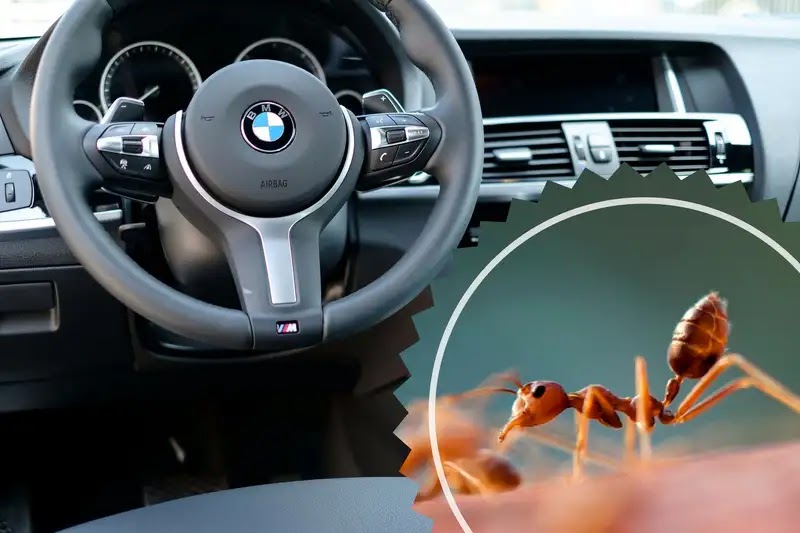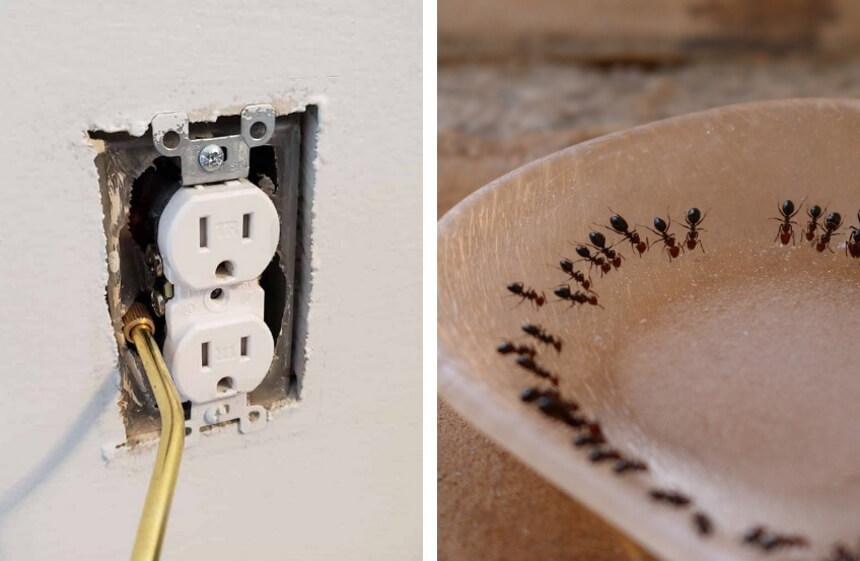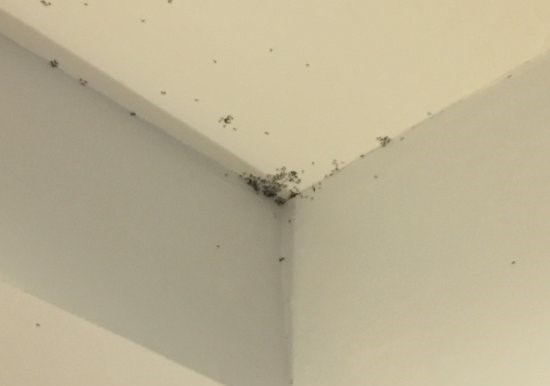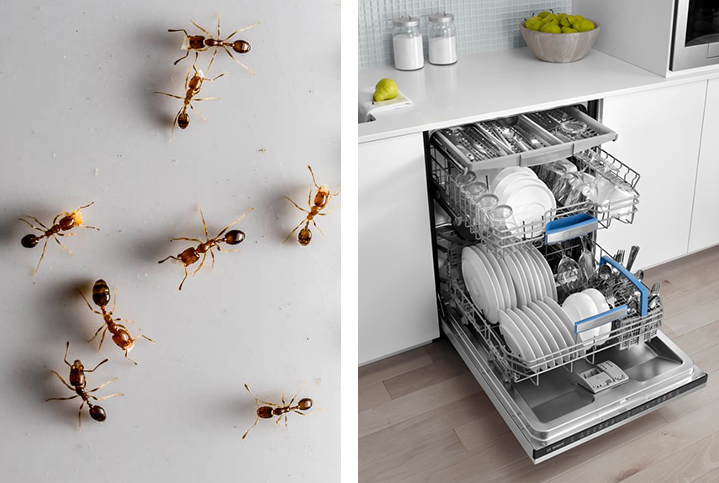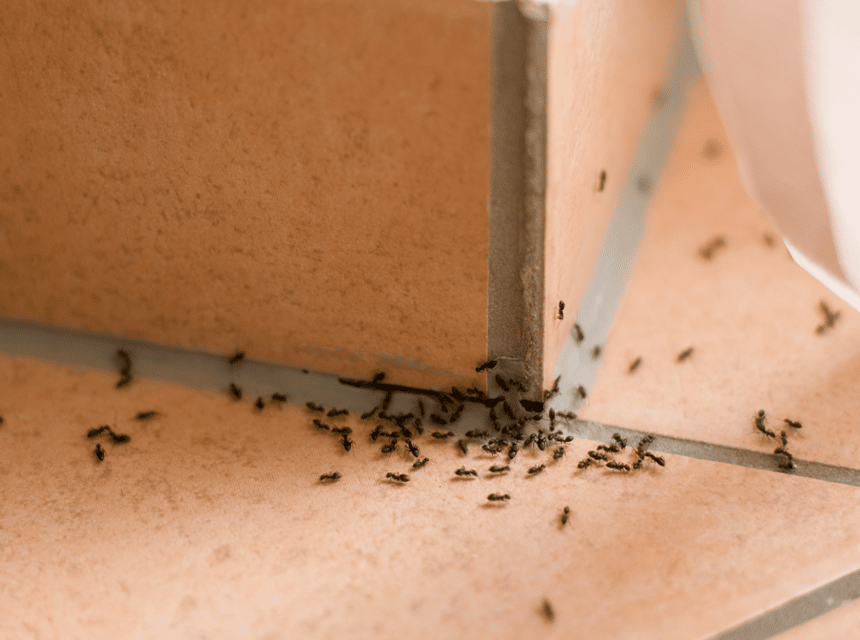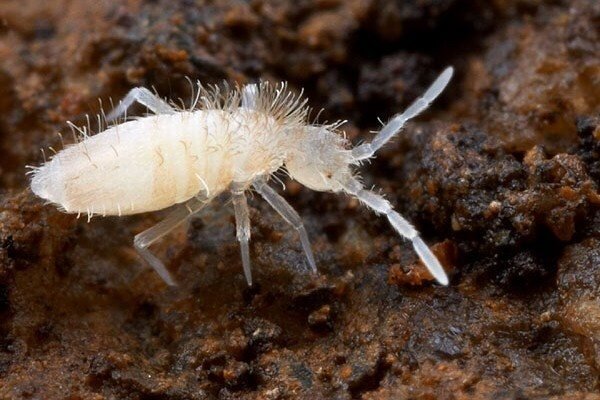

Flying ants are not dangerous! They do not eat up your furniture pieces like termites and they certainly aren’t bloodsuckers like mosquitoes. They don’t even bite – or sting. But one thing’s for sure, a swarm of flying ants is still a concern.
Flying ants don’t last very long, the males die immediately after mating and the females eat their wings up two or three days after. Still, you need to know how to get rid of flying ants. This is because they are still going to be around and will also increase in number.
The purpose of a flying ant is to reproduce so imagine leaving a few ants to roam free in your home only to find you have an ant invasion a few days later. With that said, how can you get rid of flying ants in and around your home?
Before learning the steps on how to get rid of a flying ant, you must understand the difference between flying ants and termites. While flying ants are harmless and concerned only about mating and reproduction, termites are home destroyers. They eat through ‘everything’. So while you may be lenient with a flying ant, you must be quick and precise with a termite.
The first way to determine the difference between a flying ant and a termite is to check their anatomy. This is easier to do if you happen to catch or kill a single one.
Termite’s Anatomy
Termites, they’ll have two pairs of wings that are of the same size and shape Trusted Source An Introduction to Termites Biology Taxanomy and Functional Morphology Termites are fully social insects, with an extraordinary range of morphological forms. www.researchgate.net Their body will also be almost uniform in width and they’ll have short legs coming out of them. Antennae – two of them will be straight and thin and their body color could be light or dark brown.
Flying Ant’s Anatomy
For a flying ant, their wing pair will not be of the same size. The front wings are usually larger in size than the ones under. The body will also be segmented making for a narrower waist than the body and head. The legs would also be longer than that of a termite’s. The Antennae of a flying ant Trusted Source Ant identification: Winged ants Information about managing pests of agriculture, homes, and landscapes, from UC IPM. ipm.ucanr.edu are also thin, but longer and most importantly, bent – somewhat like how elbows do. The color of a flying ant is either black, brown, or a very deepened red.
In the case that you were not able to study the pest in your home, you can study your home and look around for signs of infestation. This can also tell you whether you have a flying ant of the silent destroying termite in your home.
Termite Infestation Signs
Look for mud tubes and any damaged wood.
The common signs of a termite in a damaged wood are the presence of small holes and hollow-sounding woods.
Check for termite droppings as well such as discarded wings (recall the anatomy of their wings), or materials that look like sawdust. Finally, look for any sign of moisture such as laminated floors, peeling paint, or bubbling paint. If you found out that you’re dealing with termites, read our reiew on the best termite treatments and the best termite sprays.
Flying Ant Infestation Signs
The number one way to identify if you have a flying ant in your home is if you sight many live ants in your kitchen or food storage room. Since termites hide much more than flying ants, you might not be able to see a termite easily but ants are easier to find.
Also, if you have trails that go in and out of your home that could be an indication that you have a flying ant infestation.
Finally, look for ant nests that look like a pile of dirt or soil.
The next step on how to get rid of flying ants in your house is to identify why they are there in the first place. Knowing what leads them ‘in’ can be a good pointer for leading them out of your home. Three things attract flying ants into a house;
Normally, flying ants go to create a new colony Trusted Source 10 facts about flying ants! - National Geographic Kids Check out our facts about flying ants! Why do these ants take flight? Is there really a ‘flying ant day’? Find out in our ten flying ant facts! www.natgeokids.com . But sometimes, they get drawn to an old colony to find or after they have found a suitable mate. So if you see them in your house, it means that your house is hosting an ant colony nest somewhere.
The second pulling factor for flying ants is food. Like many other similar pests, they are attracted to sweet things and food generally. That is why you’ll most likely find them in your kitchen, food storage room, pantry, or where the kids or pets might have left a litter of food.
Lastly, if you sense a flying ant invasion in the winter, they are likely hiding out from the cold in your home. This is not such a bad thing because they usually leave right after – back to their colony. But if your house seems very comfortable for them, they might create a new nest right there and become a nuisance. This is why you need to get rid of them immediately when you see them.
As mentioned one or two times since the start of this guide, flying ants are like ordinary ants but with wings. Their other names are ‘winged ants’ and ‘alates.’ It is almost certain you already know this, but ants are one of the few tiny animals that are very organized. In their cooperation, every ant has its duty to carry out Trusted Source Ant Colony | Ask A Biologist Ants are everywhere – they thrive in forests, fields, deserts, and cities all over earth. But what is the secret behind their success? Like humans, ants are social. They live and work together in highly organized societies called colonies.Also in: Español askabiologist.asu.edu . While some are saddled with the responsibility to find food, others build the home, some protect, and a few are responsible for reproduction. That there is the work of flying ants – to reproduce.
While the male alates introduce sperm to the female, the female reproduces – as with the natural order of the concept. But the twist is that the male alates die immediately after they mate (since their life’s purpose has been fulfilled), and a female winged ant loses her wings after mating to lie low and birth new colonies.
One of the ways flying ants make it into your home is through any cracked cavity through your walls – they don’t come in through the door.
Therefore, the fastest process for how to get rid of flying ants in your wall cavity is to seal the opening.
You can do this easily with a caulking gun and some caulk. Look around your home and across every wall, floor, window, and baseboards, and make sure to seal any cavities you find. That would keep them from coming in. But what about those that are IN the house? Check the next section.
Some things are around your home that can help you get rid of flying ants. These items include the following:

Vacuum cleaners can also eliminate flying ants easily too. The trick is simply to locate their nest, start your vacuum sucker and suck them all in. Dispose of the vacuum canister immediately so that they don’t come back in.
If you have detected that the reason flying ants are in your home is because of food, glue traps could help you with flying ants – how to get rid of them. Simply create some food – preferably sugary – to use as bait for the ants. Then plant glue traps or sticky tapes around the food. When they land to take from the food, they’ll get stuck and you can simply kill them by yourself using any method you choose.
Ant repellents work how to get rid of flying ants after rain. With tons of only the best repellents available for purchase, you would be able to solve your flying ant problem in a whiz.
If you want to know how to get rid of flying ants outside, especially in your lawn, garden or backyard, then you can use a pesticide.
Pesticides are poisonous to pests but also to humans. It should not be sprayed within the house and most certainly not where there’s food.
That is why it is stipulated for outside use only. The only thing you need to do is find out which pest product might be the best option for your needs. If you’re concerned that ant repellent might harm your pet, read our reviews on the best pet safe ant killers.
Simply mix borax with any sweet product – like sugar, and pour the powder into the ants’ nest. Boric acid messes with their reproduction cycle and ends it for flying ants.
If you want to know how to get rid of flying ants in the pool, simply use the peppermint trick.
Pour some pepper mint into the water and the smell would keep them out.
This method also works for how to get rid of flying ants around the pool. Spray peppermint oil or lemon mix around the pool and that would do it.
To prevent flying ants from invading your home again, get rid of the three things that attract them in the first place.
Flying ants don’t stay very long. The male flying ants die immediately after they mate while the females eat their wings and lie low till they reproduce. But even though their life cycle is very short, they are the reason for a thousand more ants in your home.
Not technically. Flying ants are not dangerous to the home or you. They don’t bite or sting, nor do they chew through your wood. They are only concerned about reproducing and creating new colonies. But yet, if you don’t get rid of them, they can become a huge nuisance in the home.
Though flying ants are not in any way carnivores or sent to target you. In fact, flying ants are not dangerous to your or your family. But you need to get rid of them, because of their purpose. The main reason flying ants suddenly appear is to start a new colony. They reproduce and are responsible for sustaining their lifecycle. So unless you are comfortable with living alongside hundreds of tiny, crawling, food-eating ants, you need to know how to get rid of flying ants. This guide has explained everything from stage one to the last, making sure to cover even come home remedies on how to get rid of flying ants ASAP.
